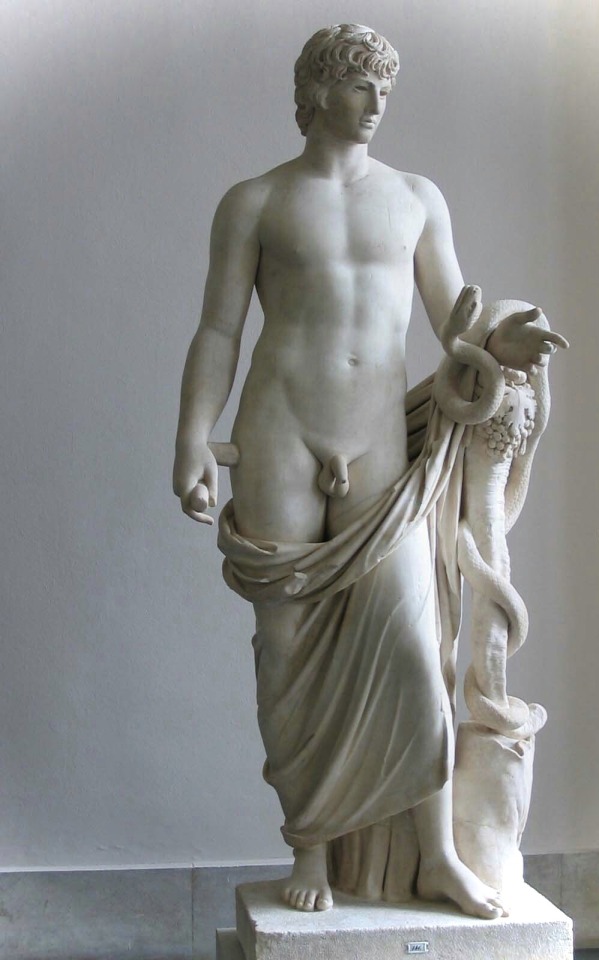#Berlin antikensammlung
Text

Ancient Greek terracotta statuette of a dancer. In her left hand she holds what appears to be krotala (the ancient counterpart to castanets), used to keep the beat while dancing. Artist unknown; 4th-2nd cent. BCE (Hellenistic). From Athens or Myrina; now in the Antikensammlung Berlin. Photo credit: Sailko/Wikimedia Commons.
#classics#tagamemnon#Ancient Greece#Hellenistic period#art#art history#ancient art#Greek art#Ancient Greek art#Hellenistic art#sculpture#statuette#terracotta#Antikensammlung Berlin
1K notes
·
View notes
Text
"the ideal medium for this story would be a series of greek vases" i say, a fool without faith. LO! my ocs have already been appropriately depicted by a single vase painted 2500+ years ago. my work here is done.
#berlin antikensammlung 3251 my beloved#this is about the castle country guys btw not any of the others#me
0 notes
Photo

Hellenistic Silver Medallion, partly gilt, Miletopoli,2nd-1st centuries BC Antikensammlung Berlin. http://hadrian6.tumblr.com
266 notes
·
View notes
Text
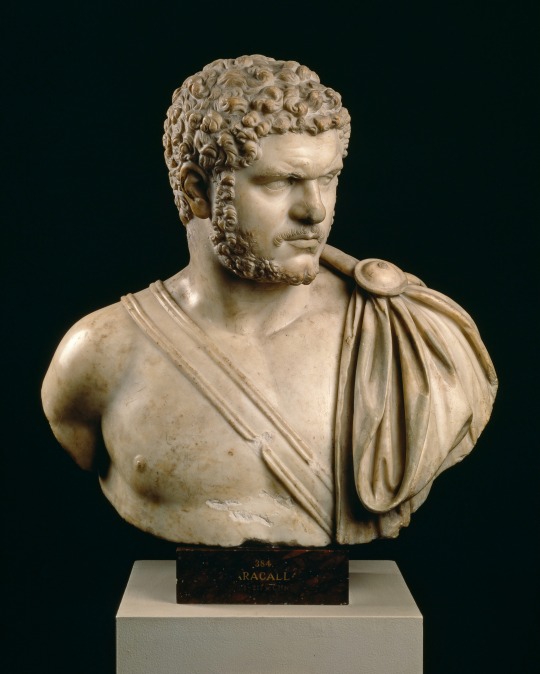
Emperor Caracalla as sole ruler, 212-17, white marble, h. 57 cm, Altes Museum, Staatliche Museen zu Berlin, Berlin.
Marcus Aurelius Severus Antoninus, given the nickname Caracalla (after a hooded Gallic cloak) even during his lifetime, came to power with his younger brother Geta after the death of their father Septimius Severus (r. 193–211). Their coregency suddenly ended when Caracalla ordered the death of Geta and many of his supporters in 212… In Mesopotamia on April 8, 217, after five years as sole ruler, Caracalla too was murdered.
Caracalla looked to Alexander the Great as a role model and sought to imitate him in both conduct and appearance. “He was such a passionate devotee of Alexander’s that he used certain weapons and drinking cups that he thought had once belonged to Alexander. He also set up many portraits of Alexander…” (Cassius Dio, Roman History 78, 7, 1). Caracalla supposedly modelled himself on the Macedonian ruler even in his gestures and facial expressions.
The Berlin portrait depicts Caracalla’s head and entire upper body, as was popular among portrait busts from the second century AD onward. Except for the general’s cloak draped over his left shoulder and the sword belt across his chest, the emperor is nude. The nudity combined with the military trappings elevates him above the realm of the everyday into a heroic sphere. His head is stocky and compact, and turned strongly towards his left shoulder. His hair, rendered in knotlike tufts, lies close to his skull. The tufts at the center of his forehead are clustered together and point upwards, perhaps a play on Alexander the Great’s hairstyle (anastole). A short moustache and beard complete the coiffure. The facial features are full of energy: numerous horizontal and vertical creases on the forehead and bridge of the nose accentuate the powerful movement and drama of the whole physiognomy. The effect is heightened by the partially shaved chin and the small, slightly open mouth. The portrait follows not only images of Alexander but also those of athletes.
In AD 212 this portrait type, the so-called “sole ruler” type, replaced the portrait of Caracalla as the young successor to the throne. It remained in use until AD 217. In presenting himself as a vigorous autocrat living up to athletic and military ideals, the emperor represented himself in a manner very different to that of his predecessors.
— text via Google Arts & Culture (© Verlag Philipp von Zabern, Antikensammlung, Staatliche Museen zu Berlin).
22 notes
·
View notes
Text
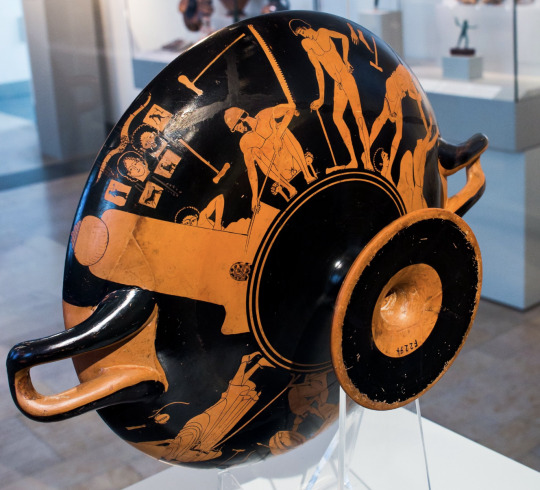
Kylix attr. Foundry Painter c. 490-480
terracotta D 30.5 cm
Berlin, Antikensammlung F2294
This image indicates metalworking (bronze) artisans creating things. Tools are along the walls as well as a shrine to Hephaestus and possibly Athena. Work shrines typically do not survive so this depiction of it in the metalworking shop is quite fascinating!
#greek#greek mythology#classics#aesthetic#goddess#hephaestus#athena#metalworking#craftsmanship#my post#metalwork#textiles#terracotta#bronze#kylix#foundry painter#berlin#museum#pots#ancient#ancient world#ancient greek#ancient history#greece#greek art#greek art and architecture
22 notes
·
View notes
Photo

Roman imperial portrait: The Severan Tondo (199 AD)
One of the few preserved examples of panel painting from Classical Antiquity.
The panel depicts the Roman Emperor Septimius Severus with his wife Julia Domna, and their sons, both also Emperors Geta and Caracalla. Geta's face has been removed after his murder by his brother Caracalla and the ensuing Damnatio memoriae (Condemnation of memory)
The image is an example of imperial portraits that were mass-produced to be displayed in offices and public buildings throughout the empire.
Antikensammlung Berlin. Altes Museum, Germany (Inv: 31329)
Of this family, only Geta was born in Rome (city). Septimius Severus was born in Leptis Magna (near Tripoli, Libya). His wife Julia was of Arab origin and was born in Emesa (modern Homs, Syria). Caracalla was born in Lugdunum, Gaul (modern Lyon, France)
251 notes
·
View notes
Text
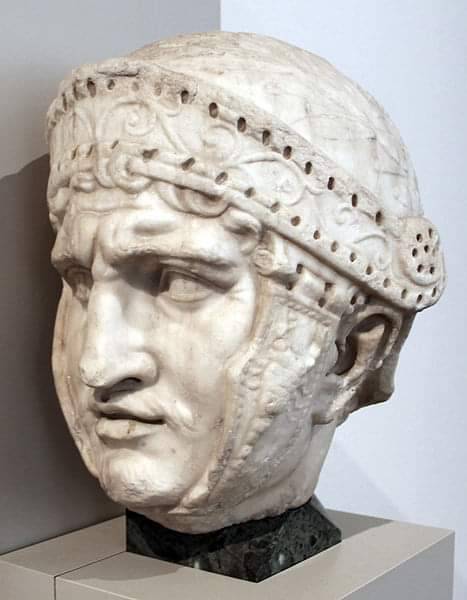
"Marble head sculpture of a Praetorian. A scorpion is visible on the cheek, probably the emblem of the Praetorian Guard in 1st – 2nd century CE. The object is in the Antikensammlung collection in Berlin."
28 notes
·
View notes
Text
yoyo from Claudie's Christmas Accessories
detail of an Attic kylix showing a boy playing with a terracotta yo-yo, c. 440 BC, Antikensammlung Berlin via Wikimedia Commons
a possible photograph of Pedro Flores, ca. 1920-1940, Smithsonian National Museum of American History
Flores Yo-Yo, circa 1928-1929, Wikimedia Commons
Based on the age of an ancient terracotta toy and a painting on a Greek vase from the same time period, we know that the yoyo has existed since at least 500 B.C.
The modern Yo-Yo, which uses a different method of attaching the string, was popularized by a Filipino immigrant named Pedro Flores, who played with a yoyo during his lunch breaks at the California hotel where he worked as a bellhop. He began manufacturing the toy in Santa Barbara in 1928. In 1929, the company was bought up by Donald F. Duncan, who built up the Duncan toy company around the success of the Yo-Yo.
The product description on the American Girl website says that a yoyo was called a quiz in the 1920s. While it's true that this toy has been called a quiz in English since the late 18th century, from what I've found it seems like the French term bandalore (also spelled bandelore) was more widely used, even in English.
instagram
17 notes
·
View notes
Text

An episode from the Gigantomachy: Poseidon, wielding his trident, attacks the Giant Polybotes, while Gaia (from whom the Giants sprang) looks on. Interior of an Attic red-figure kylix (drinking cup) by the painter Aristophanes; ca. 410 BCE. Now in the Antikensammlung Berlin. Photo credit: Sailko/Wikimedia Commons.
#classics#tagamemnon#Ancient Greece#Classical Greece#classical mythology#Greek mythology#Gigantomachy#Poseidon#art#art history#ancient art#Greek art#Ancient Greek art#Classical Greek art#vase painting#red-figure#kylix#Antikensammlung Berlin
196 notes
·
View notes
Note
Regarding your last ask ( different anon ) are there other museums besides the British and the Louvre that have stolen things? I'm aware that a lot, but in your case i'm asking about Ancient Greek artifacts or similar. Just to know, since as the other anon said before, most of the time people talk about the British Museum, but not others.
I am giving you the link to an answer where I did the math about exhibits kept in other museums. In short, other museums with inexplicably large Ancient Greek and Roman collections (many dozens of thousands) are State Hermitage (Russia), Antikensammlung Berlin (Germany), Getty Villa, Metropolitan Museum of Art, Museum of Fine Arts and University of Pennsylvania Museum of Archaeology and Anthropology (USA). These are just the top 6, besides The Louvre and the British Museum. But of course there are numerous other museums which have too big collections and that I can't know about. Check the link for more detailed information.
Usually it works with the collaboration with smugglers. I mean, it doesn't have to always be a straight out "excavation" organized by the museum like it happened with Elgin or the Louvre. As long as the museum gets in touch with smugglers and pays them to obtain looted artifacts, it's just as bad. I can't see how a museum in a different continent would be able to get its hands in 30,000+ artifacts from a specific place without collaborating with smugglers, right? (With a quick search, I was able to find "looted art scandal" articles for nearly all of them.)
65 notes
·
View notes
Photo

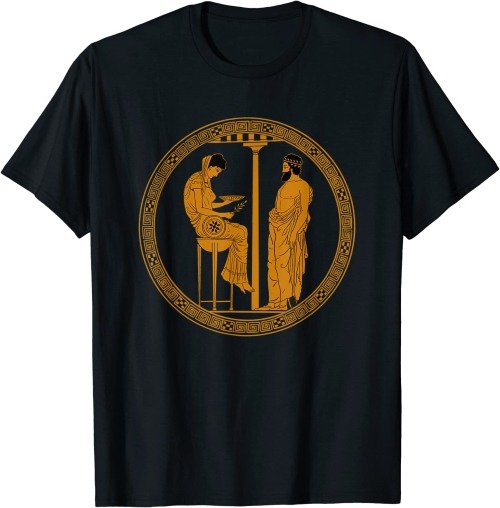
Oracle of Delphi: King Aigeus in front of the Pythia. Vase, c. 440–430 BC.Collection: Antikensammlung Berlin, Altes Museum, Berlin.
Our new design: Oracle of Delphi. Available on Amazon and Redbubble: https://archaeostore.com/
Delphi, in central Greece, is the sanctuary (sacred location) of the god Apollo. A temple there contains the Delphic Oracle, the most famous one of the Greek world's oracles (priestly fortune-tellers). Delphi was the religious center and the symbol of unity of the ancient Greek world in the sixth century BC.
Delphi is not one of the seven wonders of the ancient world. However, in terms of status and importance, few places were as powerful as Delphi, within two-and-a-half-hour driving distance from Athens. For a thousand years, rich and poor, kings and peasants came across the to visit the sanctuary of Apollo and paid homage to the god. His oracle was the spiritual center of their world.
According to a Homeric hymn of the 8th century BC, Apollo built his first temple in Delphi after having killed Python, the dreaded serpent guardian of the sanctuary of Gaia. Respecting the law that he himself had established, Apollo was exiled for eight years to atone for his crime. Then he returned as the absolute master of the place, becoming Apollo Pythian whose oracles were interpreted by a woman titled as the Pythia who was selected for her virtue and chastity.
Whoever wished to obtain information from Apollo had to offer a sacrifice to the god before entering the sanctuary. For this purpose, a sheep or a goat was sacrificed in front of the altar, which was always outside of the Greek temples. Then one had to turn to the priests of Apollo. The person seeking advice presented his question for the god to the priests as written down on a lead tablet.
25 notes
·
View notes
Photo
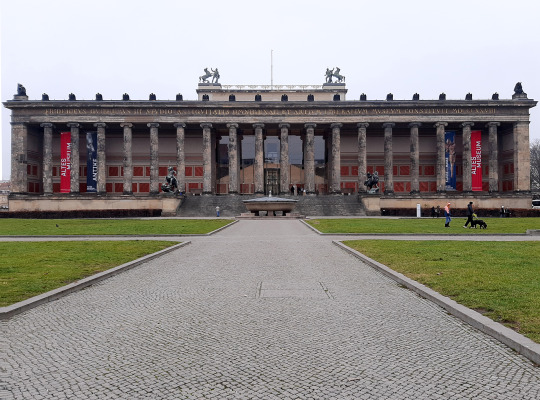


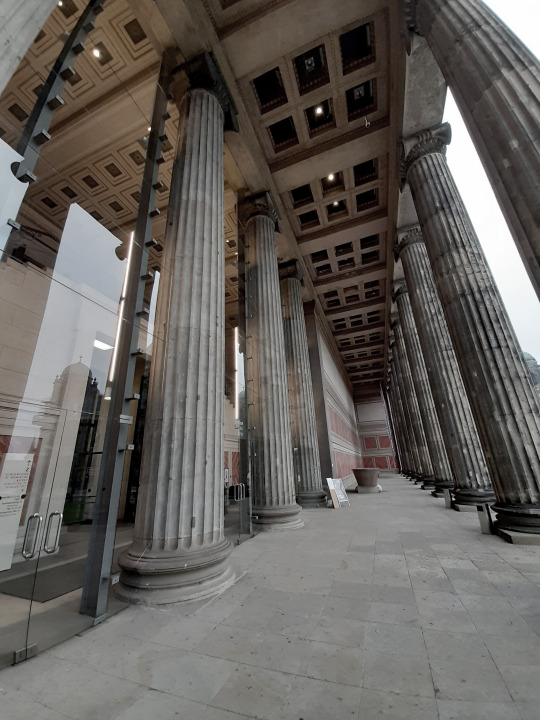

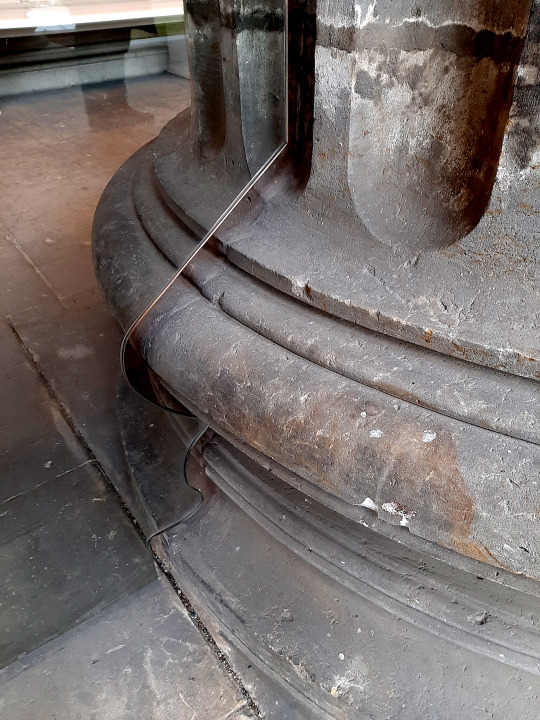
“Altes Museum”, Bodestraße 1-3, 10178, Berlin, Germany [1830] _ Architect: Karl Friedrich Schinkel _ Photos by Spyros Kaprinis [25.01.2023].
“Karl Friedrich Schinkel's Altes Museum was built in 1830 as one of the most important works of Neoclassical architecture. The museum building was built between 1823 and 1830 by the architect Karl Friedrich Schinkel in the neoclassical style to house the Prussian royal family's art collection. Along with the other museums and historic buildings on Museum Island, the Altes Museum was designated a UNESCO World Heritage Site in 1999. Since 1904, the museum has solely housed the Antikensammlung (Collection of Classical Antiquities). Since 1998, the Collection of Classical Antiquities has displayed its Greek collection, including the treasury, on the ground floor of the Altes Museum.”
https://www.smb.museum/en/museums-institutions/altes-museum/home/
https://virginia-duran.com/2013/10/24/the-free-architecture-guide-of-berlin/
3 notes
·
View notes
Text
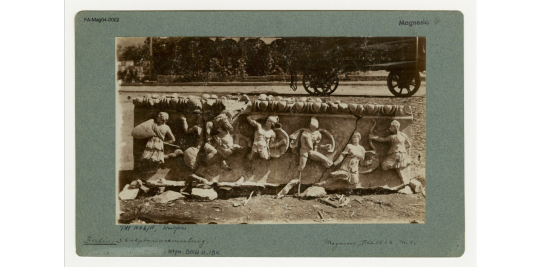
Artemistempel (Türkei / Magnesia am Mäander / Heiligtum der Artemis Leukophyrene)
Staatliche Museen zu Berlin, Antikensammlung: Magnesia am Mäander, Artemision, Westfries Fotografie (Originalabzug) Aufnahmejahr: 1891
1 note
·
View note
Photo
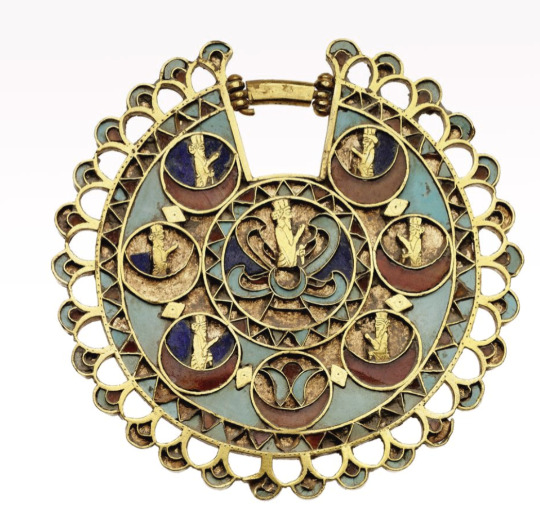
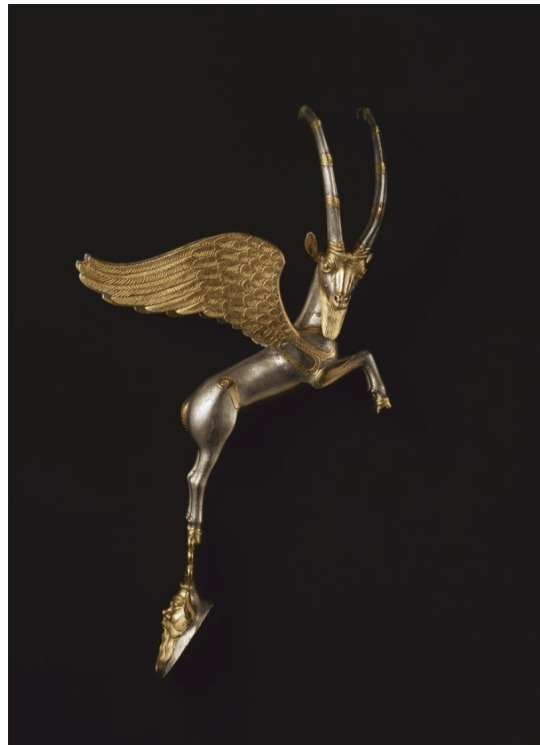
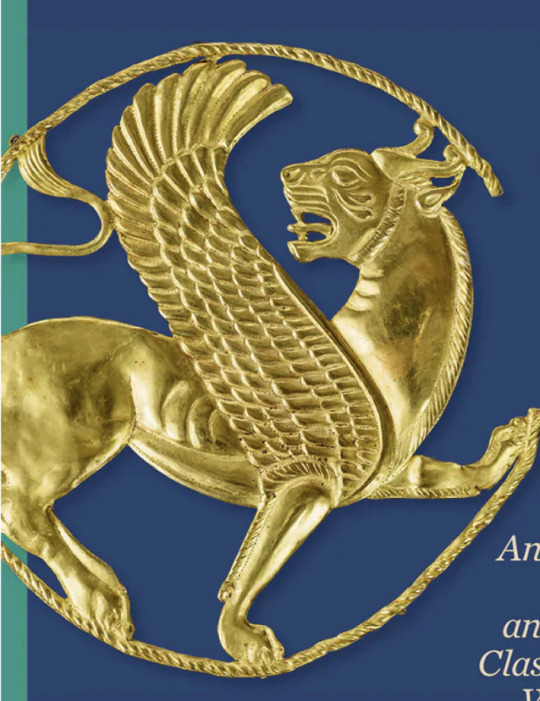
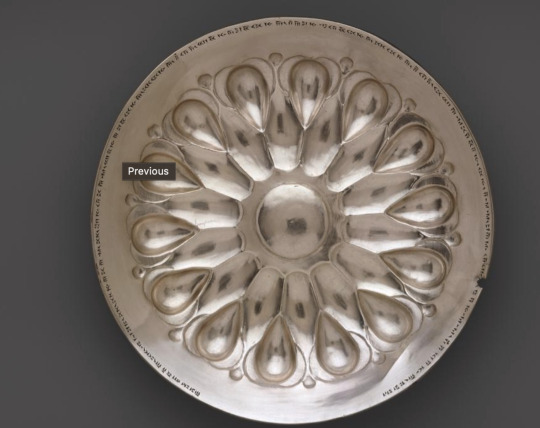
my favorite tattoo ideas from the getty museum’s ancient persian exhibit
Earring with Inlays, Achaemenid, late 400s–early 300s BC. Gold with turquoise, lapis lazuli, and cornelian.
Vessel Handle in the Form of a Winged Ibex, Achaemenid, 400–350 BC. Silver with gilding. Staatliche Museen zu Berlin, Antikensammlung, Misc. 8180a.
Wine Cup (Phiale) with a Royal Inscription, Achaemenid, 465–424 BC. Silver.
0 notes
Text
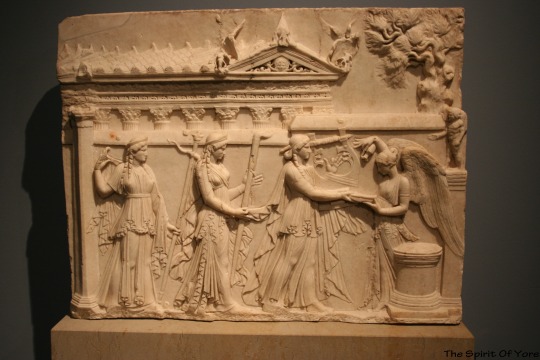
Relief citharédique représentant la triade apollinienne (Apollon, Artémis, Létô), Ier siècle av. J.-C., Antikensammlung, Staatliche Museen Zu Berlin, Deutschland
0 notes
